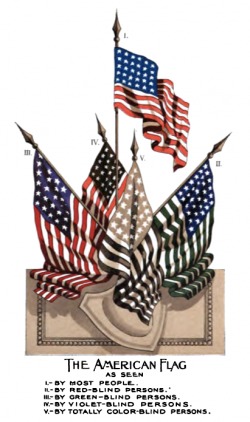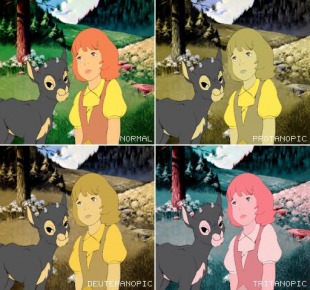Title.

The picture on the left side is a famous illustration made in 1895 showing types of color blindness.
Based on the appearance of color blindness, it can be divided into two main types;
Total and Partial Color blindness.
Total color blindness means the person sees the world in black and white.
Partial color blindness means the person can still identify colors but in a wrong way.
Monochromacy and Dichromacy
Monochromacy means Rod monochromats, or complete achromats, or just simply Rod pigment only. This is what people call "True Color Blind". The person cannot identify any colors, they see the world in Black, Gray, and White. This is the Total Color Blindness as mentioned above. To have Monochromacy the person must inherit for the disorder gene from both parents.This has a ratio of 1 out of 30,000.
Dichromacy are most common color blind since the person still can recognize different colors but just not as accurate as a normal person. This is the Partial Color Blindness as mentioned above. Dichromacy is divided into 3 types, Protanopic, Deuteranopic, and Tritanopic.
3 types of Dichromacy

Protanopic: Color Blind between Red and Bluish-Green as the top right picture. The Green is darker than the red.
Deuteranopic: Green Color Blinded as the bottom left picture. The red is darker than the Green.
Tritanopic: Color Blind Blue or Blue and yellow. This is very rare compare to the other two types. It is shown as the bottom right picture.
Protanopic and Deuteranopic are the Red and Green color blind. One sees red is darker than green and the other sees green color darker than red.
